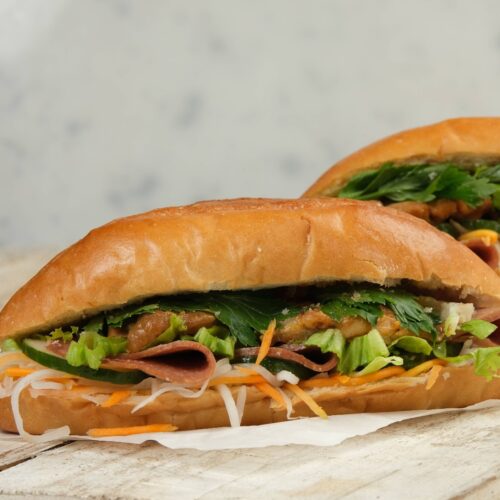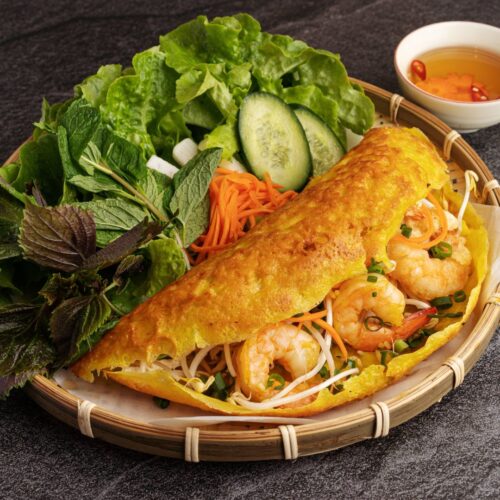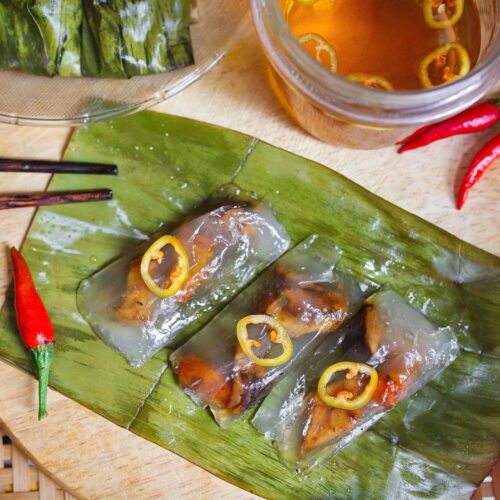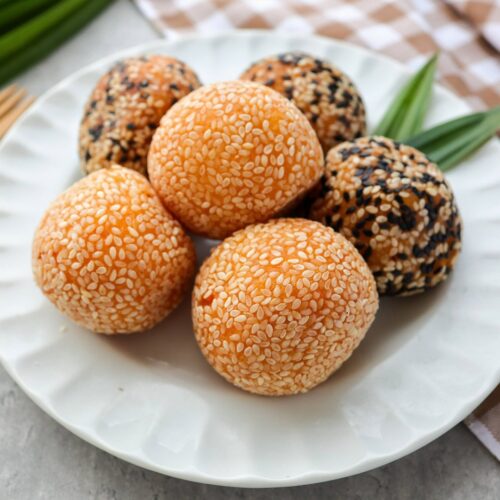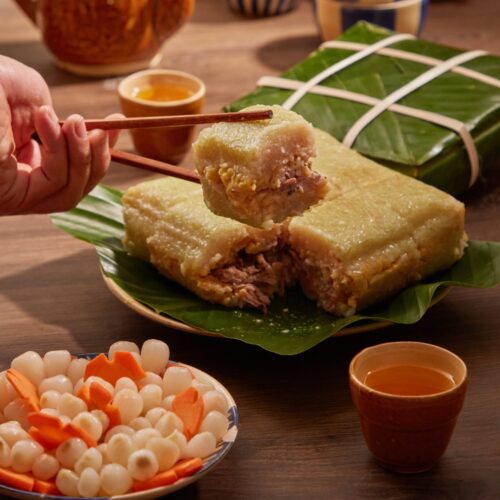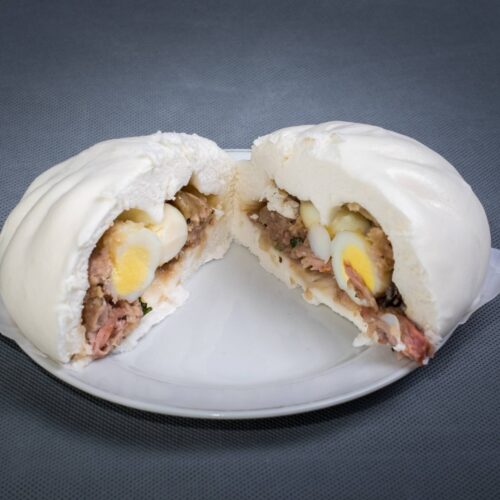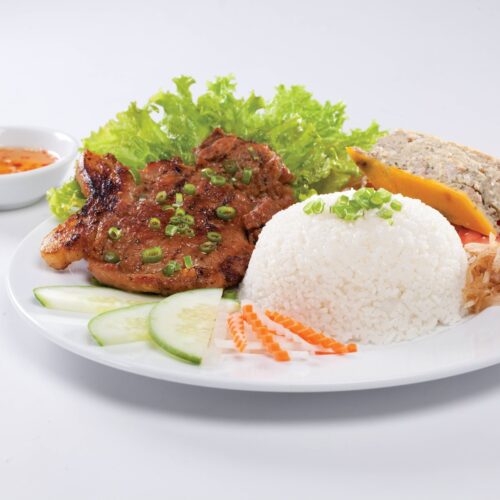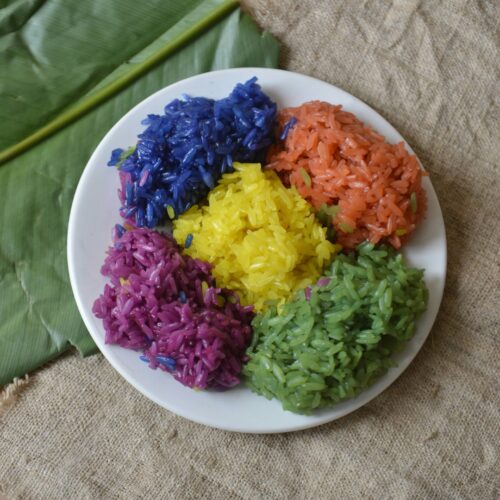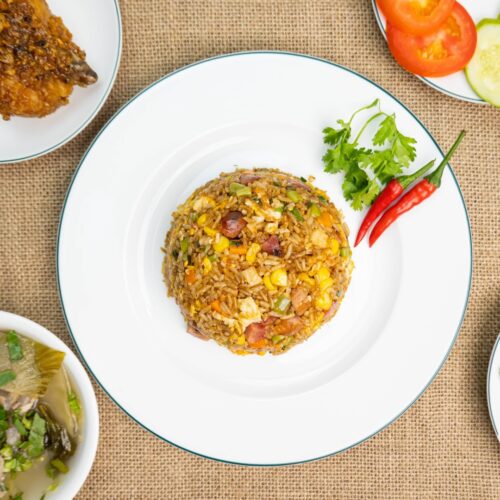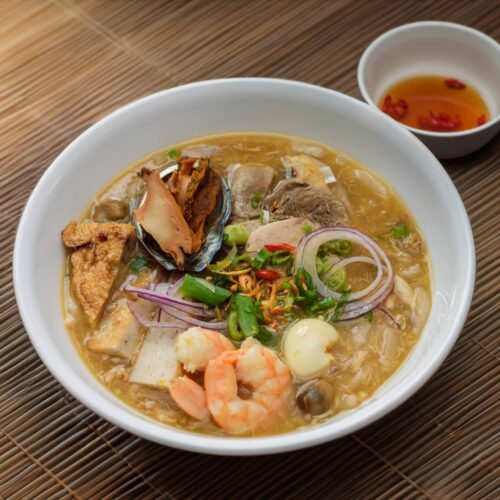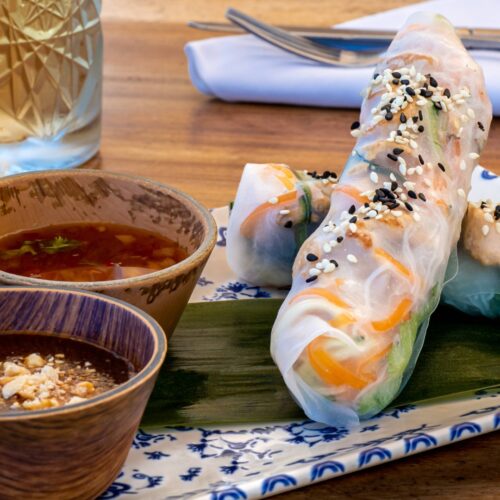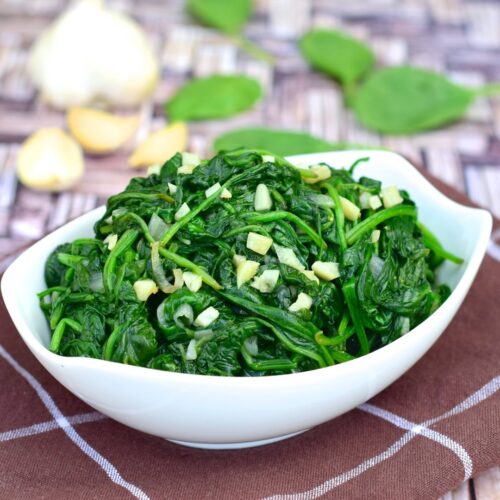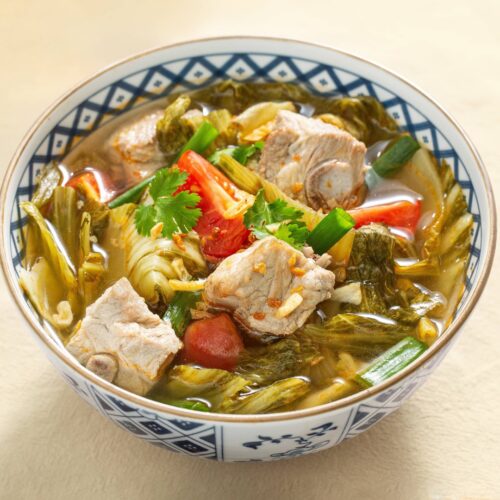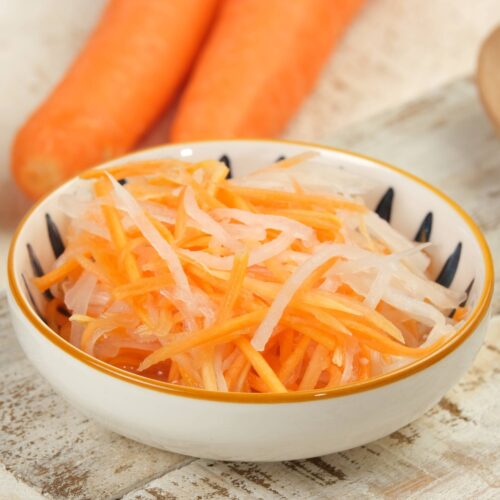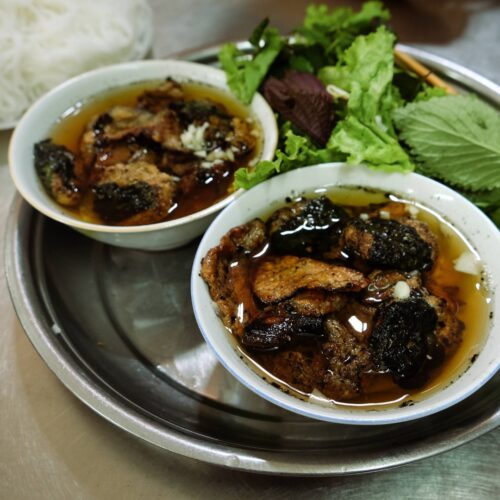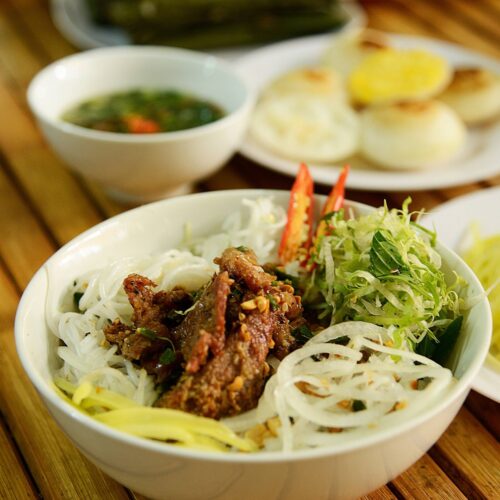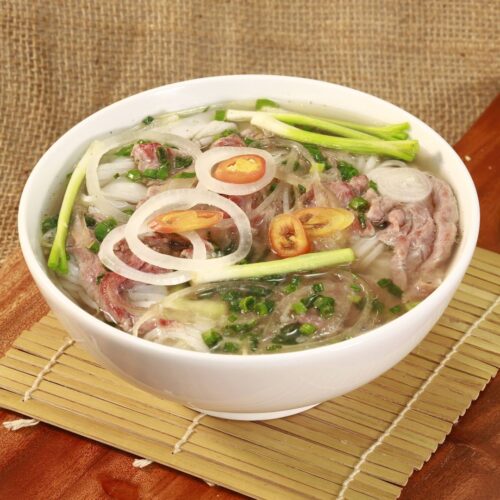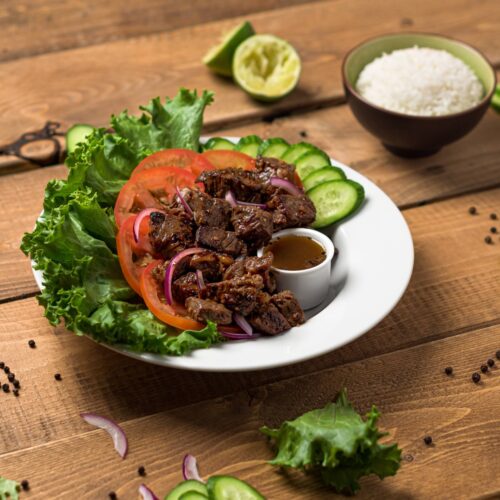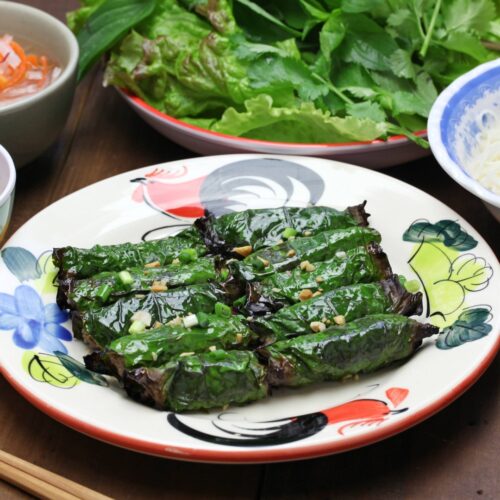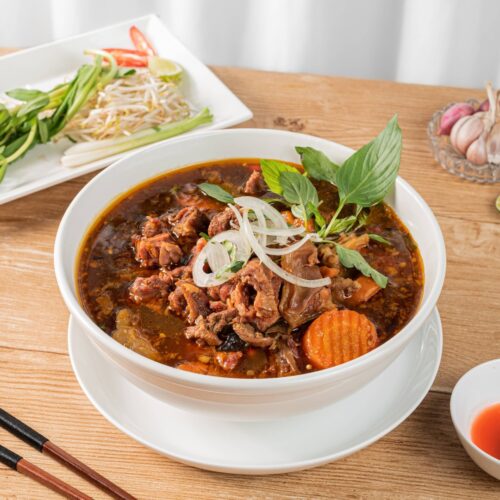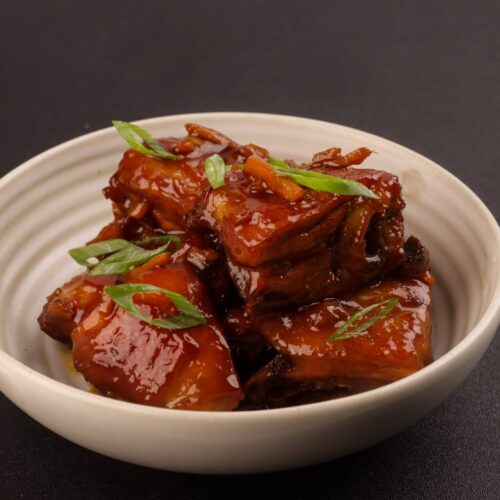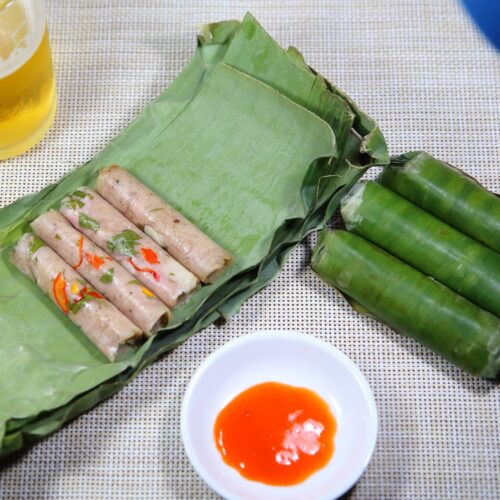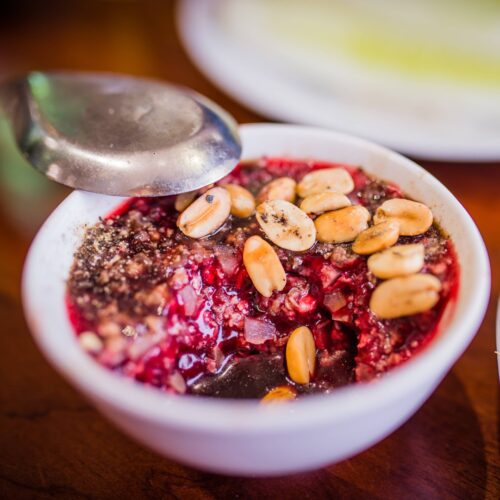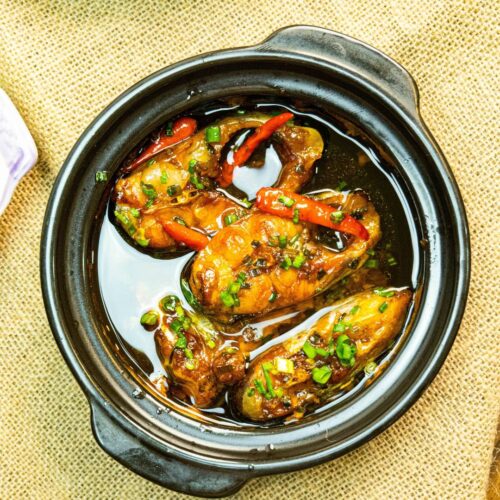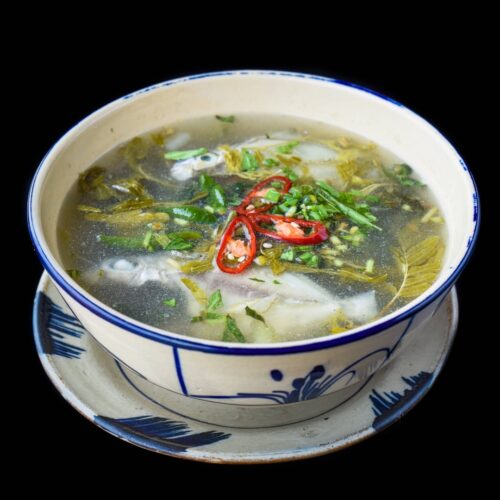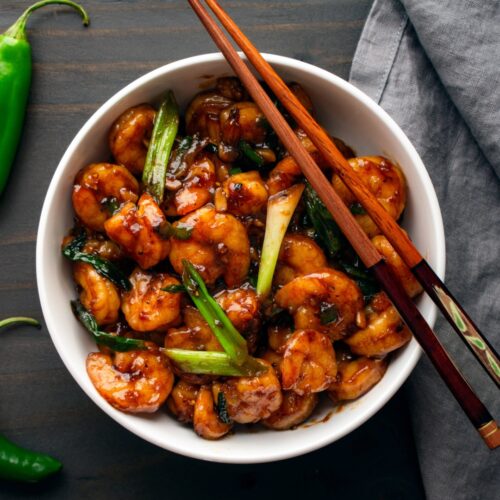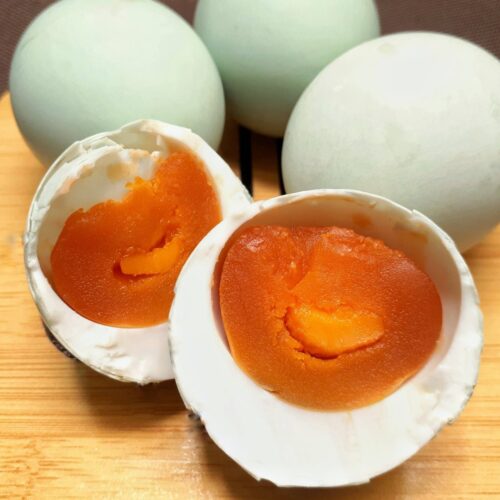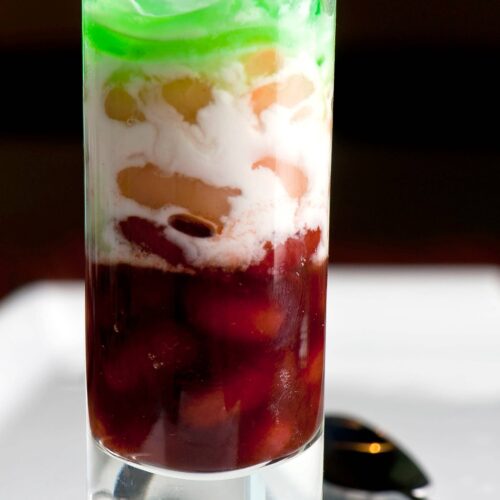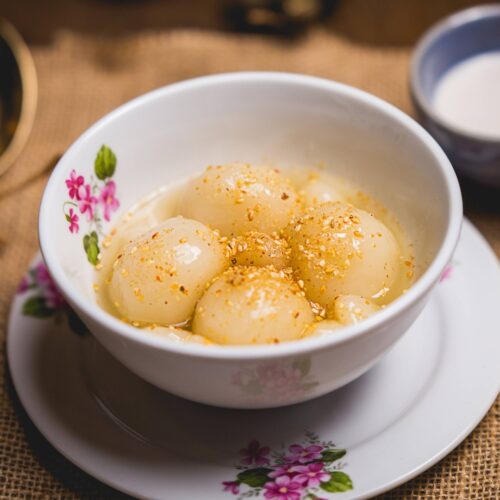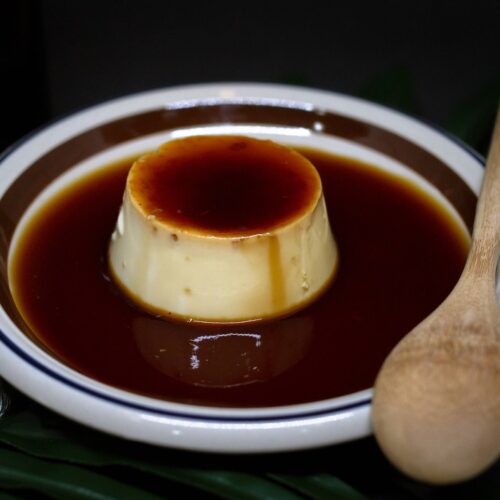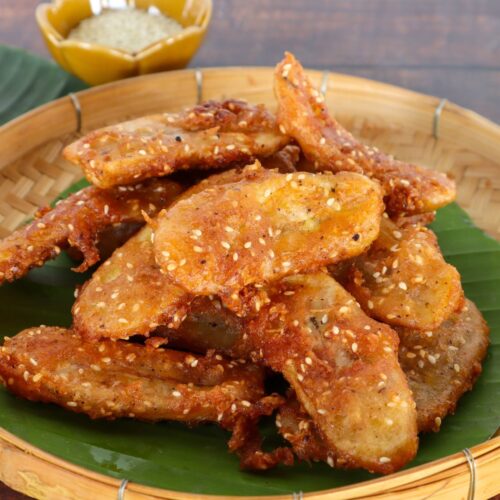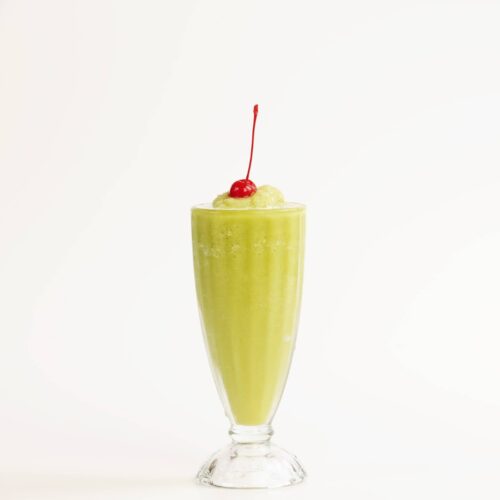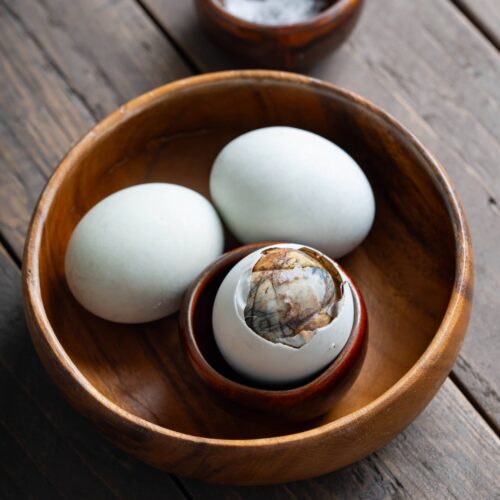Vietnam is a country in Southeast Asia, known for its rice terraces, cities, and breathtaking coastline and a sensory feast. The heart of Vietnam lies in its food culture….
Vietnamese food: discover traditional cuisine
5 most similar countries by ingredients
5 least similar countries by ingredients
Country Food Similarity Index https://objectivelists.com/country-food-similarity-index/
Other tabs are just a click away
The average Vietnamese daily plate size is
1973 g.
Grains
Fish and seafood
Produce
Eggs and dairy
Meats
Sugar, fats and nuts
Core ingredients
Herbs
VIETNAMESE MINT
PERILLA/SHISO
CILANTRO
MINT
LEMONGRASS
CULANTRO
THAI BASIL
BETTEL LEAVES
KAFFIR LIME LEAVES
Spices
STAR ANISE
BLACK PEPPER
CINNAMON
DRY CHILI
CLOVES
Aromatics
GARLIC
SHALLOT
SPRING ONION
LIME
GINGER
CHILI PEPPERS
TURMERIC
GALANGAL
PANDANUS LEAVES
Condiments
FISH SAUCE
FERMENTED FISH/SEAFOOD
RICE WINE
SPECIALTY VINEGAR
SOY SAUCE
OYSTER SAUCE
CHILI OIL
SESAME OIL
TAMARIND
FERMENTED TOFU
TOASTED RICE POWDER
Grains
BÁNH MÌ – Vietnamese baguette adapted from French bread, lighter and crispier with rice flour added to the wheat flour.
BÁNH XÈO – crispy crepes made from rice flour and turmeric, filled with pork, shrimp, and bean sprouts.
BÁNH BỘT LỌC – translucent tapioca dumplings filled with shrimp and pork.
BÁNH CUỐN – steamed rice rolls filled with ground pork and wood ear mushrooms.
BÁNH BÈO – small steamed rice cakes topped with dried shrimp, crispy pork rinds, and scallion oil.
BÁNH CAM / BÁNH RÁN – deep-fried glutinous rice balls coated in sesame seeds, filled with mung bean paste.
BÁNH CHƯNG/BÁNH TÉT – traditional sticky rice cakes wrapped in banana leaves, filled with mung beans and pork, essential during Tết (New Year).
BÁNH BAO – steamed wheat flour buns stuffed with pork, eggs, and vegetables.
CƠM TẤM –a dish of fractured rice grains traditionally considered lower quality, served with grilled pork, egg, and pickled vegetables. The unique texture of the broken rice has become highly sought after.
Nežinau ar tuos parsiunčiau, bet pasirodė įdomūs, nes jie įvairių spalvų. Vadinasi: Xôi ngũ sắc. XÔI- Sticky Rice Dishes, arious preparations of glutinous rice, both sweet and savory. Common versions include xôi gà (with chicken), xôi đậu xanh (with mung beans), and xôi lạp xưởng (with Chinese sausage).
CƠM CHIÊN – Vietnamese fried rice of various preparations. The most usual ingredients are white rice, garlic, salt and pepper.
BÁNH CANH – thick rice and tapioca flour noodles in a broth.
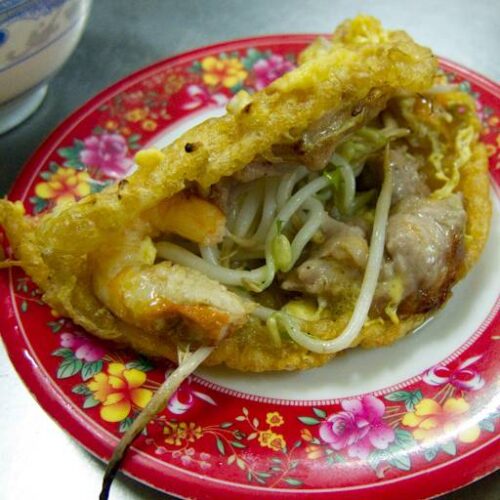 Charles Haynes from Hobart, Australia, CC BY-SA 2.0, via Wikimedia Commons
Charles Haynes from Hobart, Australia, CC BY-SA 2.0, via Wikimedia Commons BÁNH KHOAI – hue pancake – crispy rice flour pancake filled with pork and shrimp.
MÌ QUẢNG – quang noodle dish of rice noodles, shrimp or pork or chicken, turmeric, peanuts, taosted sesame rice crackers, chilies, lime and a small amount of broth. served on various occasions, such as at family parties, death anniversaries, and New Year.
Produce
GỎI CUỐN – fresh spring rolls of raw vegetables, herbs, and rice vermicelli wrapped in rice paper, often served with peanut sauce. The freshness of herbs like mint, cilantro, and perilla leaves defines this dish.
RAU MUỐNG XÀO TỎI – a classic vegetable dish of water spinach stir-fried with garlic, fish sauce, sugar, oyster sauce and salt. Served hot.
CANH CHUA – tamarind-based sour soup with pineapple, tomatoes, bean sprouts, and various vegetables and herbs. It can be served alone, with white rice, or with rice vermicelli. Variations can include prawns, squid, spare ribs, fish cakes and quail eggs.
ĐỒ CHUA – pickled carrot and daikon radish, essential for bánh mì, a frigde staple and a palette cleanser between rich dishes.
Meats
BÚN CHẢ – grilled pork patties and sliced pork belly served with rice noodles, lang basil, beansprouts, green papaya, carrots, and onions. and dipping sauce of fish sauce, sugar, lime juice, vinegar, stock, crushed garlic, chilli, etc. Bún chả originated from and remains very popular in Hanoi and throughout Vietnam.
THỊT NƯỚNG – skewered and grilled marinated pork, often served over rice or noodles with pickled veggies, scallion oil and dipping sauce.
CHẢ LỤA – Vietnamese pork sausage made of lean pork, potato starch, garlic, ground black pepper, and fish sauce. wrapped in banana leaves.
NEM NƯỚNG – grilled pork meatballs/sausages, often served as an individual appetizer on a stick or with rice noodles or rice as a main course. The meat is typically flavored with chopped shallots, crushed garlic, fish sauce, sugar, and black pepper.
PHỞ BÒ – beef pho, rice noodles in a complex beef broth simmered for hours with charred ginger, onions, star anise, cinnamon, and other spices, served with fresh greens.
BÒ LÚC LẮC – named for the tossing motion used while cooking in a wok. Features cubes of tender beef marinated in oyster sauce, fish sauce, soy sauce, and garlic. The beef is quickly seared to achieve a caramelized exterior and served over a bed of watercress or lettuce with sliced tomatoes and red onions, accompanied by a lime-pepper dipping sauce (muối tiêu chanh).
BÒ LÁ LỐT – betel leaf beef rolls seasoned with lemongrass, garlic, shallots, and fish sauce, wrapped in wild betel leaves (lá lốt) and grilled. The betel leaves impart a complex, peppery flavor and become crispy during grilling. Served with rice paper, vermicelli noodles, fresh herbs, and a fish sauce-based dipping sauce.
BÒ KHO – a hearty beef stew influenced by French cuisine but distinctly Vietnamese with star anise, lemongrass, and fish sauce. Features chunks of beef slow-cooked with carrots, onions, and spices including five-spice powder. The sauce is rich and slightly sweet from annatto oil. Typically served with French bread (bánh mì) for breakfast or with rice noodles (hủ tiếu).
GÀ KHO GỪNG – chopped chicken (gà) simmered in ginger broth, also spiced with fish sauce, garlics, shallots and caramel syrup nước màu.
GÀ NƯỚNG – grilled chicken with Vietnamese marinade of lemongrass, ginger, shallots, garlic, fish sauce, honey, soy sauce, oyster sauce, chili pepper.
VỊT NƯỚNG – roasted duck is a beloved dish throughout Vietnam. The crispy outer layer is a must; it compliments well the sweet and chewy inner meat.
NEM CHUA – cured fermented beef or pork dish, garnished with garlic and chili.
TIẾT CANH – raw blood pudding of pork or duck blood, served with cooked meat.
Fish and seafood
CÁ KHO TỘ – caramelized fatty fish, like catfish, braised in a clay pot with fish sauce, sugar, garlic, shallots, and black pepper. The fish develops a deep amber color and incredibly rich flavor through slow cooking. It’s often served family-style with rice.
CHẢ CÁ LÃ VỌNG – originally from Hanoi, this famous dish features turmeric-marinated fish (traditionally snakehead fish or catfish) that’s grilled tableside with dill and green onions. It’s served with rice noodles, peanuts, fresh herbs, and a fermented shrimp paste.
CÁ NƯỚNG – Vietnamese grilled fish is often prepared whole, stuffed with lemongrass and coated with a mixture of galangal, turmeric, and other spices.
CANH CHUA CÁ – this sour fish soup perfectly represents southern Vietnamese cuisine. Made with fish (often catfish or snakehead), pineapple, tomatoes, tamarind, and elephant ear stem, it balances sour, sweet, and savory flavors masterfully.
BÁNH CANH CUA – a thick seafood noodle soup featuring crab meat, shrimps or quail eggs in a rich broth. The signature thick, chewy noodles are made from tapioca and rice flour, making this dish distinctively different from phở.
TÔM RIM – caramelized shrimps, cooked in a clay pot with fish sauce, sugar, black pepper, and sometimes coconut juice until they develop a sticky, glossy coating.
Sugar, fats and nuts
CHÈ BA MÀU – layered three colour dessert, arguably Vietnam’s most recognizable sweet treat. Found everywhere from street carts to restaurants, it features distinct layers of red beans, mung beans, and pandan jelly topped with coconut milk and crushed ice. Its visual appeal and balanced flavors make it a national favorite.
CHÈ TRÔI NƯỚC – these glutinous rice balls filled with sweet mung bean paste and served in ginger syrup are especially popular during. They’re similar to Chinese tangyuan but with distinctly Vietnamese flavors.
BÁNH FLAN – though French in origin, this crème caramel has become thoroughly Vietnamese, especially when served with coffee caramel sauce. It’s available everywhere from street stalls to high-end restaurants.
BÁNH CHUỐI CHIÊN (Fried Banana Cake) – This simple but beloved dessert of battered and fried bananas is found on nearly every street corner. It’s often eaten hot as an afternoon snack or dessert.
SINH TỐ – these Vietnamese fruit smoothies made with condensed milk are found at nearly every street corner and market. While technically a beverage, they’re thick enough to eat with a spoon and often serve as a dessert or sweet snack.
Bizzare dish
BALUT / TRỨNG VỊT LỘN – is a fascinatingly bizarre food – a partially developed duck embryo that’s boiled and eaten right from the shell – when the embryo is around 18-20 days old. At this stage, you can see the developing duckling with its beak, feathers, and bones forming.
When you eat balut first crack a hole at the top, sip the broth (which fans say is the best part), and then peel away the shell to eat the contents. Inside, you’ll find the yolk, which has become creamy and rich, and the developing embryo.
Vietnamese people often enjoy balut as a late-night snack or street food, particularly while drinking with friends. Regular eaters focus on its rich, savory flavor and don’t think twice about what they’re eating, while newcomers often have to overcome the psychological barrier of eating a recognizable embryo.
